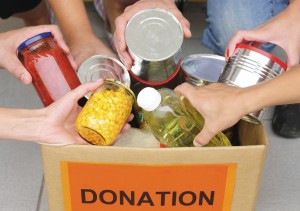The Sounding of the Shofar Awakens The Soul
One of the highlights of the high holidays is to hear the shofar.
The shofar, a hollowed out ram’s horn, is the most ancient musical instrument used throughout history as a rallying call to bring people together. In ancient Israel, the shofar announced the New Moon (Rosh Chodesh), was blown in the desert as a battle cry to declare war and celebrate victories, was blasted on Mount Sinai when the Jewish people received the Ten Commandments, and the Hebrew tribe Levites of the Holy Temple played the shofar as one of their musical instruments.
In modern times, the shofar most commonly blown like a trumpet to signal the coming of the New Year—Rosh Hashanah—and to awaken our souls and bring us closer to God.
Traditionally, the most common place to hear the shofar is in synagogue, but this year because of covid19, many of us will hear the blast of the shofar outdoors, in a park, on a neighborhood street, in our backyard, or virtually on a computer. Continue reading
Sukkot Celebrates Fall Harvest…And Much More
Now that Yom Kippur is over and the hard work is done, it’s time to get ready for the next Jewish holiday, Sukkot (Hebrew word for booths or huts),  a week-long harvest festival that begins Sunday night, five days after Yom Kippur.
The festival of Sukkot is one of the three great pilgrimage festivals—the others are Passover (April 8-16) and Shavuot (May 28-30). These holidays celebrate both agricultural festivals and historical events in the history of the Jewish people, when in ancient times Jewish people traveled to the Temple in Jerusalem. In Israel, Sukkot is a major holiday, no work, no school, and everyone is outdoors sharing meals, singing songs, and giving thanks for the bounty of another season.
Also known as the Feast of Tabernacles, Sukkot is like the American holiday Thanksgiving in that we give thanks for another season of crops that will sustain us, but it is so much more. Sukkot ranks right up there in important holidays because it commemorates the time when we received the Torah at Mount Sinai, were freed from slavery, and wandered the desert for 40 years to the Promised Land. Jews today are still on a journey, and holidays like Sukkot remind us to free ourselves from the material things that often keep us in bondage. It’s a time to detach from the comforts we are accostomed to inside our houses and reconnect with the natural wonders that sustain us inside a flimsly little hut called a sukkah (singular word for Sukkot). Continue reading
Yom Kippur–Holiest & Happiest Day of the Year
Tonight begins Yom Kippur, also known as the Day of Atonement, the holiest day of the year. Yom Kippur is a time for fasting, prayer, reflection, and repentance.
On Yom Kippur, more Jews pack the auditorium than any other time of the year, in fact, extra chairs are needed to accommodate the larger than usual crowds. Why? Is it because we have committed so many sins and need God’s forgiveness? Or because our Jewish guilt forces us to show up at temple least once a year (when actually joyous celebrations happen throughout the calendar)? Or is it because we want to see our friends and show off our new outfits? Or perhaps spending time in temple distracts us from our hunger pangs before we get to finally go home and break the fast with blintzes and bagels with creamed cheese.
While Yom Kippur is considered a solemn time with deep, genuine prayers, this high holiday is also the happiest day of the year. Think about it—Yom Kippur is all about opportunities and hitting the restart button, physically and spiritually. Through fasting, Yom Kippur is a time to detox (way before the body cleanse became a health trend), and it is a time to let go of baggage that has been weighing us down the previous year. Yom Kippur is a time to bow our heads in prayer, yes, but not hang our heads low because of past mistakes, failures, and shortcomings. Yom Kippur is a time to return to God who loves us no matter what and is pleased that we showed up, whether in a house of worship or in the apple orchard, or in our own minds.
If we are sincere in how we approach Yom Kippur, with an open mind, heart, and soul, willing to let go of the burdens that bring us down, forge ahead with a renewed sense of purpose, then Yom Kippur is a time to rejoice and begin a new year with a clean slate, a fresh start.
G’mar Hatima Tova, “May you be sealed in the Book of Life†for goodness, kindness, happiness, health and prosperity.
My High Holiday Hike With Hashem
During the High Holidays, the 10-day period between Rosh Hashanah and Yom Kippur, more Jews fill the pews than any other time of year. Known as The Days of Awe, we push ourselves to do some serious soul searching. Â We dig deep during this time of teshuva, a Hebrew word that translates literally as “return” and describes the return to God and with our fellow human beings as we ask (and grant) forgiveness and strive to better ourselves, our souls.
We walk or drive to our places of worship, sometimes having to park miles away and take a shuttle because the parking lot is so packed. We don our finest holiday clothes, schmooze with friends, listen to the loud blasts of the shofar, recite special prayers, and read from the Torah. The rabbis wear white robes adorned with silver and gold to symbolize royalty and the annual coronation of God as King of the Jewish people.
On this Rosh Hashanah, I celebrated the birthday of the Jewish people at Nusach Hari B’nai Zion because I feel particularly close to the Orthodox rabbis there, and I gain a lot of insight from the learner’s service afterwards; On Kol Nidre, the eve of Yom Kippur, I helped collect tzedakah, or charity, at Congregation Shaare Emeth, a reformed temple where my kids made their bar and bat mitzvah. When Cantor Seth belts out the Jewish prayer Avenu Milkenu,“Our Father Our King,†his beautiful voice fills the sanctuary. Every year, the rabbis deliver sermons of various themes, their words profound and personal and make me feel proud to be a Jew.
This year, something special happened to me in between Rosh Hashanah and Yom Kippur services, and it took place somewhere without stained-glass windows or a Holy Ark. There was no dress code or crowd of people, either. You see, Hashem a Hebrew term for God, came to me while I was lost in the woods, all alone, wearing gym shorts and a t-shirt, and covered with sweat and bug spray.
I call this story my “A-HAshem†moment.
Four Ways to Forgive, A Yom Kippur Lesson
Forgiveness. It’s the theme of Yom Kippur, and not an easy concept to swallow—kind of like that pickled herring served at break the fast.
Yom Kippur is a time for atonement between us and God. It is the most solemn (and yet positive) time in the Jewish calendar. During the High Holidays, or the 10 Days of Awe, we not only ask God for forgiveness, but also that of our fellow human beings…and ourselves. We can pretty much count on God forgiving us for our mistakes, wrongdoings, and lashon hara (talking negatively about people behind their back) because the Almighty has unconditional love for us, like a parent would of his child. Making mistakes is an inevitable part of human nature and an opportunity for self growth. Asking (and accepting) forgiveness, whether the hurt was caused intentionally or not, is a physical, tangible way to heal the soul and clean the slate for the coming New Year. And it’s not meant to be easy. For Jews, this is the time when the real homework begins. Continue reading
Fasting on Yom Kippur Feeds the Soul
Whoever says that wearing white after Labor Day is a fashion faux paux must not be Jewish. During the fall holiday season, white clothing is actually encouraged at Yom Kippur services because it symbolizes purity. Notice the rabbi’s special white robe. Also acceptable on the holiest day of the year are sneakers and rubber flip-flops! Never again will I balk at Sari’s white sandals or force Jack to squeeze into leather loafers that are two sizes too small. Continue reading
Fasting Makes Jews Hungry for More
One of my favorite parts about being Jewish, aside from the rich traditions and ancient wisdom that are passed down to us, is our “it’s-all-about-the-food†attitude. This expression is especially true on holidays, lifecycle events, and pretty much any given meal.
So on the one day of the year when Jews are asked to fast, Yom Kippur, I’m almost relieved to have a chance to cleanse my palette and my soul before I reach for another slice of honey cake again. Continue reading





